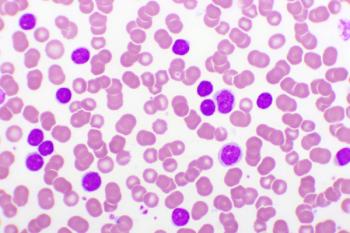
Emerging Therapies for Managing Hidradenitis Suppurativa: Tiffany Mayo, MD
Tiffany Mayo, MD, speaks on emerging therapies for treating hidradenitis suppurativa at the 2025 Skin of Color Update.
At the
HS is a chronic, genetic, inflammatory condition that causes painful and recurring abscesses to form under the skin, primarily in areas of the body with sweat glands.1 At the Skin of Color Update on October 3, Mayo addressed the external and medical factors that work together to treat patients with this condition on the panel discussion dedicated to emerging therapies and strategies for effectively managing patients with HS.
The typical time to diagnosis for a patient with HS can range anywhere from 7 to 10 years, Mayo said during the panel discussion, and sometimes even longer for patients with skin of color, as some specialists are not used to recognizing how HS presents in patients with skin of color.
“We know that the classic location of the underarm can already be a little bit hyperpigmented in some of our patients with skin of color, making that inflammatory nodule difficult to discern,” she
During the panel discussion, Mayo noted the different treatments she’s frequently used in her practice or seen in other practices, like using tetracycline or doxycycline for the first line of treatment, and sometimes even dual therapies for managing HS long-term.
“There is no one treatment. It's going to be dynamic in the way that we treat patients,” Mayo said during the panel discussion. “So we want to consider adding and stacking therapy, since the patient didn't do well on long-term antibiotics and is currently on an oral contraceptive pill.”
This transcript has been lightly edited. Captions are auto-generated.
Transcript
What lifestyle changes, in addition to medical therapies, help treat patients with hidradenitis suppurativa?
I think this is a complex question, because we know that lifestyle things can certainly impact HS. However, I think we lead our conversation with lifestyle management, and our patients with HS are given the impression that they have control over their disease if they were to just control their lifestyle. I'd like to kind of back that up a bit and say that we need to lead the discussion with the fact that this is an inflammatory, genetic medical condition that has inflammatory components and hormonal components, as well as lifestyle factors that may impact the disease.
Setting the framework that lifestyle isn't the reason that you have HS, but it can impact your disease, helps a patient understand that their lifestyle isn't the reason they have this condition, and it's going to be very different for each patient. Patients may notice that certain things in their lifestyle flare up their condition, and those are the things we're going to target. It's not a one-size-fits-all. It's not: lose weight, stop smoking, and your HS is going to go away. It's more so: if you smoke, that likely is contributing to refractory disease and more flares, so let's work on that.
Obesity has been shown to be associated with HS, as well as metabolic disease; it likely is a part of the inflammatory cascade in HS, but how can we work on managing it in individual patients? I think lifestyles and foods; I definitely counsel all my patients on good nutrition and exercise, regardless of their weight and other comorbidities, because that's just a part of a healthy lifestyle and decreasing inflammation in general.
Are there any promising therapies in development that may improve outcomes for patients with hidradenitis suppurativa?
All of them—there is no one therapy for one patient, so we are always seeing these different phenotypes, and I mentioned different endotypes that we know HS may be very different from one patient to the next. These emergent therapies targeting different pathways are all so exciting because we know that our patients need different ways to target their disease, because what we currently have is great, but many of our patients are continuing to flare.
From a patient standpoint, patients want something oral, so the oral medications are also very exciting to give them a different option to consider for managing their disease.
What do you hope community dermatologists will conclude from your presentation that they can apply to their daily practices?
We need all hands on deck when it comes to managing HS. It is not an uncommon disease, and it can be managed in community practices and in academic practices. We are all responsible for managing this challenging disease. I think it doesn't have to all be done in one visit, though.
I think that is the big takeaway: that we can develop plans and expectations to meet the needs of our patients along the way in their treatment journey. We can collaborate with experts; we can collaborate with other colleagues in health care to help us manage the different comorbidities associated with HS. As dermatologists, we don't have to do it all, but we are the main physicians who are going to be coordinating the care for these patients.
References
1. Hidradenitis suppurativa (acne inversa): symptoms & treatments. Cleveland Clinic. December 20, 2022. Accessed October 8, 2025.
2. McCrear S, Mayo T. Gauging the current landscape for treating patients with hidradenitis suppurativa: Tiffany Mayo, MD. AJMC®. October 9, 2025. Accessed October 9, 2025.
Newsletter
Stay ahead of policy, cost, and value—subscribe to AJMC for expert insights at the intersection of clinical care and health economics.









































